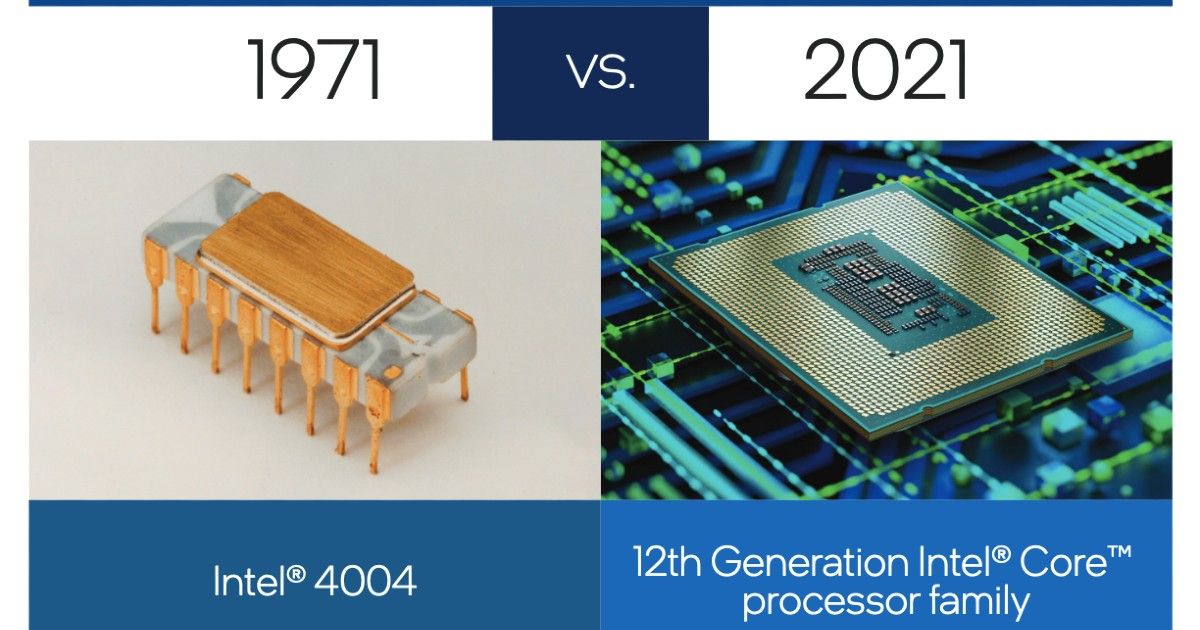
The Intel 4004, widely regarded as the world’s first commercial microprocessor, has turned 50 years old today. The processor was first commercially advertised on November 15, 1971, and was born as a result of a company’s request for a custom chip for its printing computer. In the intervening 50 years till today, we stand at the edge of mainstream quantum computing – which the Intel 4004 can be fairly credited with having edged on.
It’s rather fascinating to note the differences in the technology of the chipsets made by Intel back in November 1971, and today – November 2021. At present, the reference for comparison is the 12th generation Intel Alder Lake processor. To compare, while the 12th gen Alder Lake chip has billions of transistors, the Intel 4004 had 2,300 – a fairly finite number in comparison.
The Intel 4004 was also made on the Silicon Gate processor, which was 10um in size. The latest generation 12th gen Intel Alder Lake processors, meanwhile, are based on a 10nm process – 1/1000th in size. The 4004 boasted initial clock speed of 108kHz and peak frequency of 750kHz, while the Alder Lake chip today goes all the way up to 5.2GHz. The diameter of the silicon wafer on the 4004 was 2 inches, while the Alder Lake chip is 300mm in size.
The Intel 4004 was a massive feat of engineering, as it could the same amount of computing power as the ENIAC, or the Electronic Numerical Integrator and Calculator. The latter is widely regarded as the world’s first electronic computer, and when it was built in 1946, took up an entire room. After gradual evolution 25 years down the line from the ENIAC, the 4004 could produce the same amount of performance – but in the size of a fingernail.
“Looking back at 1970, it was clear that microprocessors would change the way that we design systems, switching from using hardware to software instead. But the speed with which microprocessors developed over time and were adopted by the industry was really surprising,” said Federico Faggin, one of the co-designers of the 4004 microprocessor.
Alongside Faggin, Intel engineers Ted Hoff and Stan Mayor had also worked on the chip. Since then, there have been 28 generations of Intel processors, and had also given birth to Moore’s Law. The latter stated that with the number of transistors doubling every two years, the cost of personal computing would be halved in the same time period.











